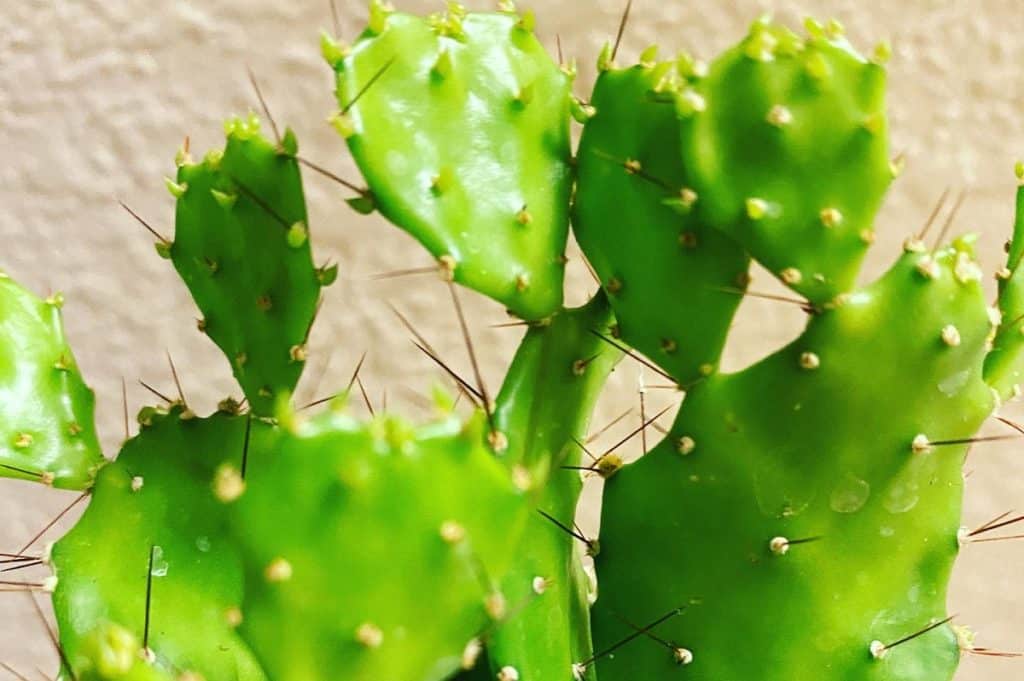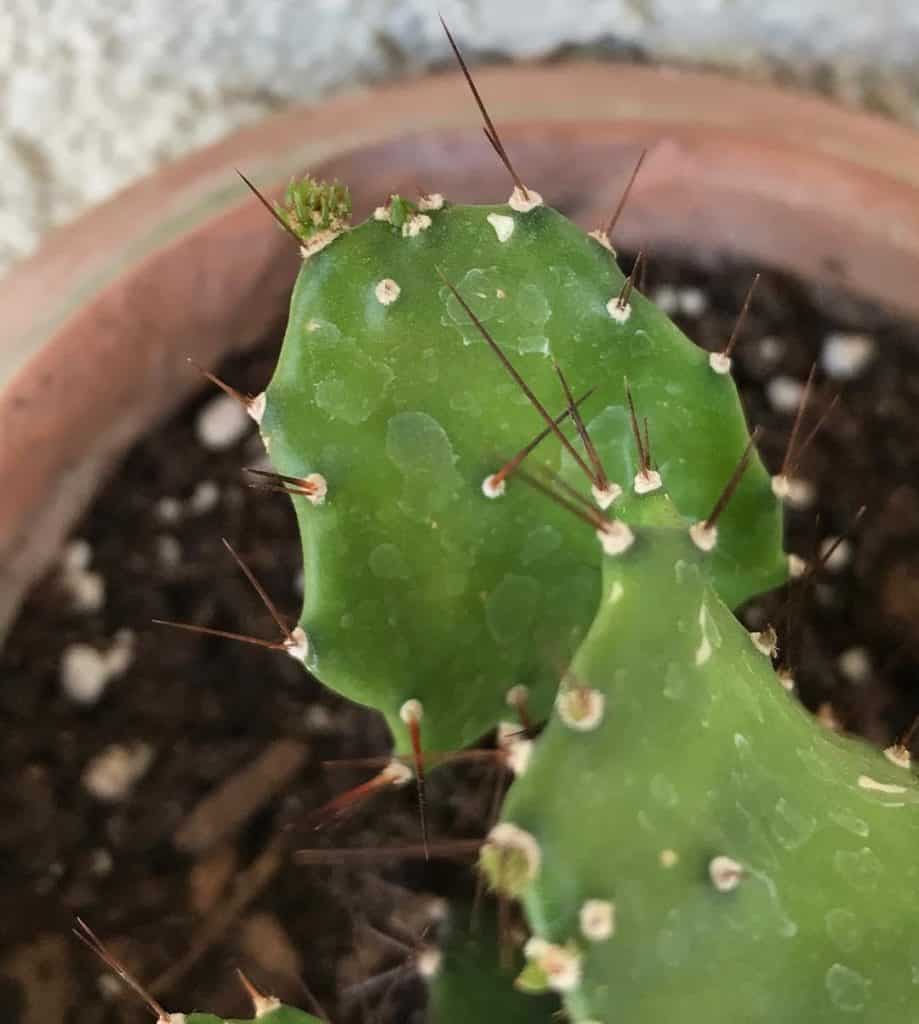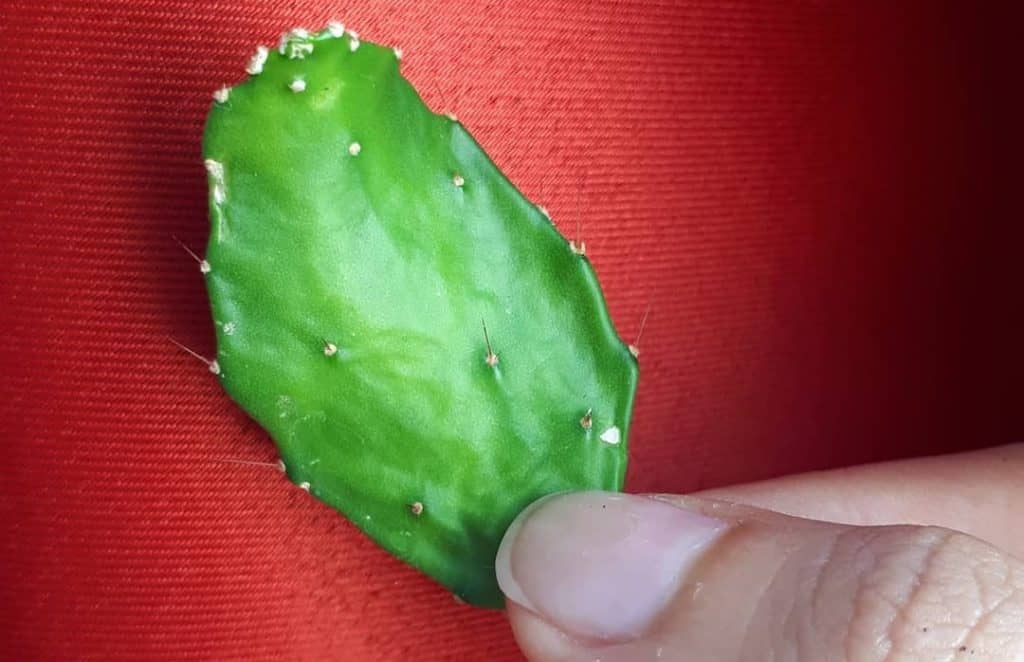Argentine Opuntia: Characteristics and Care
Are you a cactus enthusiast seeking a new botanical beauty to add to your collection? Look no further than the Argentine Opuntia! With its striking egg-shaped pads and vibrant yellow blooms, this cactus is sure to captivate your senses and become the centerpiece of your succulent garden. Get ready to embark on an exciting journey as we dive into the world of this fascinating South American native.

Contents
About the Argentine Opuntia
The Argentine Opuntia, also known as Opuntia argentina or Opuntia argentiniana, boasts origins in the arid regions of Argentina and South Africa. This resilient cactus species forms large, thick pads that sprout from a central stem, creating a visually striking and unique shape. Despite their plump appearance, these pads are flat and succulent, perfectly adapted to thrive in dry environments.
During the summer months, the Argentine Opuntia puts on a stunning display as it produces vibrant yellow flowers that later develop into deep purple fruits. One of the most remarkable features of this cactus is its rapid growth rate, which can quickly transform it into an unruly presence if not properly managed.
Related Post:
195 Opuntia Varieties [With Pictures]
How to Care for the Argentine Opuntia
Light Requirements
Like most cacti, the Argentine Opuntia thrives in direct sunlight. Expose it to as much sun as possible by placing it in an open garden area or on a sunny balcony. However, during the intense summer heat, provide some afternoon shade to prevent damage from extreme temperatures.
If you live in an area with limited natural light, consider investing in a grow light. Position the light source about 12 inches (30 cm) above the cactus and leave it on for 12-16 hours per day to mimic natural sunlight conditions.
Watering Needs
As a drought-tolerant plant, the Argentine Opuntia has minimal watering requirements. Overwatering can lead to root rot, so it’s crucial to strike the right balance.
During the growing seasons of spring, summer, and fall, water your cactus once or twice a week, allowing the soil to become slightly moist but not soaked. In the winter months, reduce watering to once every two weeks, just enough to prevent the soil from drying out completely.
When watering, be mindful not to splash the stem, as this can promote rot. Additionally, consider using distilled water or collected rainwater to avoid mineral buildup in the soil from tap water.

Soil and Potting Mix
The Argentine Opuntia thrives in well-draining, nutrient-rich soil with a slightly acidic to neutral pH range of 6 to 7. For optimal growth, create a potting mix consisting of 20% coco coir or peat moss, 60% vermiculite, and 20% sandy soil. This combination ensures proper aeration and drainage, preventing root rot.
If you prefer, you can incorporate a small amount of organic potting soil or vermicompost to enhance fertility. Repotting annually and loosening the soil will help maintain good air circulation and prevent compaction.
Fertilizer Requirements
During the growing seasons of spring, summer, and fall, fertilize your Argentine Opuntia once a month with a liquid fertilizer. Opt for a phosphate-potassium-rich formula before and after blooming, and a nitrogen-based fertilizer during the seedling stage.
Ensure the fertilizer is diluted and applied at a low concentration to avoid over-fertilization, which can stunt growth and cause yellowing. It’s best to skip fertilizing during the winter dormancy period.
Temperature and Humidity
The Argentine Opuntia thrives in desert-like conditions with high temperatures ranging from 68°F to 95°F (20°C to 35°C). Avoid exposing it to temperatures below 50°F (10°C) or above 95°F (35°C), as this can slow growth and induce dormancy.
Additionally, this cactus prefers well-ventilated areas with low humidity, as high moisture levels can lead to pest infestations and fungal diseases. Ensure proper air circulation around the plant to prevent water accumulation.

Pests and Problems
Like many cacti, the Argentine Opuntia can be susceptible to various pests and diseases, including:
- Anthracnose: Black spots in a spiral pattern caused by high humidity and temperatures.
- Stem rot: Discoloration and decay due to insects, cold damage, or infected soil.
- Root-knot nematodes: Insect infestations that darken the stem and pads, eventually leading to plant death.
- Spider mites: Tiny pests that create web-like structures and cause reddening or yellowing of the pads.
- Aphids: Small insects that cause yellowing and distorted growth.
- Other issues: Mealybugs, soft rot, viruses, rodent damage, and dry rot.
Regular inspection and prompt treatment are essential to maintain the health of your Argentine Opuntia.
Pruning
The Argentine Opuntia requires minimal pruning. Simply remove any dead or withered branches, flowers, or pads to prevent the spread of disease and maintain a neat appearance.
Potting and Repotting
When potting or repotting your Argentine Opuntia, choose a clay pot with ample drainage holes to ensure proper air circulation and water drainage. Avoid pots that are too small, as this can restrict root growth, or too large, which can lead to water accumulation.
Repotting is generally unnecessary for large, established plants, but for potted specimens, annual repotting is recommended. Gently lift the plant, remove any old soil clinging to the roots, and transfer it to a fresh container filled with a well-draining potting mix.
How to Propagate the Argentine Opuntia
The Argentine Opuntia can be propagated through division, grafting, or seeding. Here’s how:
Cutting:

- Cut off lateral branches or the plant’s tip, ensuring you have a few inches of stem.
- Allow the cut end to callus over for a few days.
- Plant the cutting in well-draining soil, and water sparingly.
- In a few months, you should see new growth emerging.
Grafting:
- Obtain a suitable rootstock cactus.
- Cut off the top of the rootstock.
- Remove the roots from the Argentine Opuntia cutting.
- Place the Opuntia cutting in the center of the rootstock.
- Secure the graft with rope or grafting tape.
- After a few weeks, when the graft has taken, remove the ties.
Seeding:
- Sow Argentine Opuntia seeds in a well-draining seed-starting mix.
- Cover the tray with plastic to maintain high humidity until germination occurs.
- Once seedlings emerge, remove the plastic and provide ample sunlight and water.
With its captivating beauty and easy-going nature, the Argentine Opuntia is sure to become a beloved addition to your cactus collection. Embrace the joy of nurturing this delightful succulent and revel in its vibrant blooms and unique charm.
